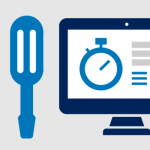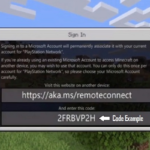Modernized Data Center Designs are becoming more common and have been shown to be beneficial for both IT teams and companies as they move forward with their digital transformation initiatives.
Modernizing your data center can help you reduce power consumption, increase operational efficiency, improve reliability, and increase flexibility in your IT infrastructure planning. It is a great way to take advantage of new technology and increase productivity, so you can achieve Data Center Migrations Expertise.

Modernization can be achieved through many different actions, but there are five steps that you should always take into consideration before moving forward with any modernization project.
Converge When Possible
STL recommends designing your converged data center infrastructure to support the entire IT stack and workloads. Modernized designs should use common hardware for computing, storage, networking, and management with automation tools that can be scaled up or down as needed.
This includes virtualization or hyper-converged systems, which allow you to combine storage arrays with compute nodes so an organization only has one set of hardware to maintain rather than many disparate ones.
These solutions are more economical since they use fewer physical resources, plus it’s easier to manage operations because there is less complexity from having redundant equipment.
An example of a converged data center infrastructure is the Cisco Unified Computing System (UCS). UCS bundles compute, storage and networking into one chassis with an integrated management system.
This modular approach to hardware allows you to scale up or down as your needs change without replacing all of your equipment at once.
Be sure that any new designs are flexible enough for future expansion so they will not have bottlenecks when scaling out in the future.
Modernized data centers should also be easy to maintain by being able to quickly deploy necessary resources and recover from downtime due to failures or disasters like flooding, fires, earthquakes, etc., because this can save time and money while providing continuous service availability during emergencies like power outages or natural disasters.
Let Software Drive Modernization
In a traditional data center, IT is responsible for every part of the process. Modernized designs allow software to take over many tasks that used to be handled by humans, so there are fewer operational costs, and you can save time on mundane tasks like patching servers or setting up IP addresses.
This also allows your staff members more opportunities to do higher-value work because they don’t have as much responsibility for installing and configuring various technologies but instead focus on planning infrastructure migration projects and designing new architectures with systems managers who handle configuration management.
Having a distributed software layer instead of specialized hardware can help you reduce power consumption and increase operational efficiency. Modernized data centers should also have the ability to automate routine tasks, like backups or upgrades, so it can free up IT staffs’ time for other projects that are more strategic in nature.
An example of a software-driven modernization is Cisco UCS Director (UCD). UCD enables you to manage multiple aspects of your infrastructure through an intuitive graphical interface from anywhere on the network without worrying about configuring individual devices.
You can set up server pools with virtualization hosts, storage arrays, and networking components and move servers across different platforms all within one console screen while maintaining control over what each device does at any given moment using centralized management tools instead of spending hours manually installing updates.
Embrace Commodity Hardware
Most data centers are still running on proprietary hardware and software, making it difficult to scale up or down without high cost.
Modernized data center designs should use commodity hardware, which is industry-standard desktop computers with the same features as enterprise-grade servers but at a lower price point because they are manufactured in higher volume for simpler computing tasks like word processing instead of more complicated things like running financial modeling applications.
This enables you to easily add capacity when needed by just adding a few racks of servers rather than getting rid of existing equipment to replace all your old kit with new systems.
Commodity hardware also allows you to work around any limitations embedded within specialized devices so everything can be upgraded incrementally over time without having to buy expensive new gear every time an upgrade is released.
Empower End Users
End users are often the ones who will be interacting with your data center so it’s essential to have a structure that accommodates them easily. Modernized designs should allow people to work from any location in an organization, whether that means they need access on-site or remotely.
This way, you can create more flexible workspaces for employees while eliminating bottlenecks caused by people coming into the office every day just to get their job done because IT is no longer required to install equipment locally.
Break Down Silos
Traditional data center designs created barriers between different groups that all had their own independent needs and workloads.
Modernized data centers should be designed to break down these silos by making it easier for IT staff members to work with the other people in an organization who are responsible for supporting business goals, like marketing or finance, instead of just only collaborating internally within IT.
Conclusion
If you’re looking to modernize your data center, there are many steps that can be taken based on what is most important for your company.
Modernized data center designs should offer more opportunities for high-value work with a distributed software layer instead of specialized hardware and have the capacity to automate routine tasks, so IT staff have more time for other projects.
Join 25,000+ smart readers—don’t miss out!







